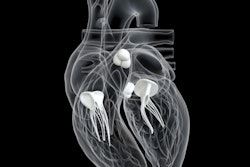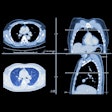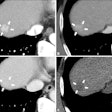Coronary CT angiography (CCTA) shows high diagnostic accuracy, sensitivity, and predictive values in detecting severe coronary artery disease, according to research presented at the Society of Cardiovascular Computed Tomography (SCCT) annual scientific meeting.
The study result is from a retrospective analysis of the technique in 156 patients and supports its use over standard invasive coronary angiography (ICA), noted first author Camille Chan, MD, of St. Luke's Medical Center in Quezon City, the Philippines, and colleagues.
“These findings support [CCTA's] role as a reliable noninvasive diagnostic tool,” Chan's group explained.
Coronary artery disease (CAD) remains a leading cause of morbidity and mortality worldwide. While ICA is the gold standard for diagnosing severe CAD, it carries risks such as vascular complications and bleeding, the researchers explained.
Conversely, CCTA has emerged as a promising noninvasive alternative, they noted. However, despite its increasing use, there is limited local data comparing its diagnostic accuracy to ICA. Thus, the researchers evaluated the diagnostic accuracy of CCTA in detecting severe CAD and further identified factors associated with discordant findings between CCTA and ICA.
The group gathered data on 156 patients who underwent both CCTA and subsequent ICA between January 2022 and December 2024. They collected patient demographic profiles, clinical characteristics, and imaging findings from electronic medical records.
The analysis involved assessing the sensitivity, specificity, positive predictive value (PPV), negative predictive value (NPV), and likelihood ratios for CCTA, with ICA serving as the reference standard. In addition, they analyzed concordance between the two modalities.
According to the results, the prevalence of severe CAD in the group was 71%. CCTA demonstrated high concordance with ICA (86%) and an overall diagnostic accuracy of 82%. Its sensitivity was 90%, specificity was 74%, PPV was 89%, and NPV was 77%.
In addition, the positive likelihood ratio was 3.48 (with one as reference), while the negative likelihood ratio was 0.12. Lastly, a family history of CAD was significantly associated with discordant results between CCTA and ICA (odds ratio, 3.19, with one as reference), the researchers reported.
“Factors such as family history may contribute to discordance with ICA results,” the group wrote. “Standardization of imaging protocols and further studies on its impact on clinical outcomes are recommended to optimize its use in CAD evaluation.”





















